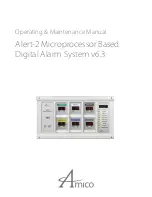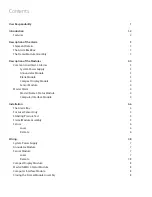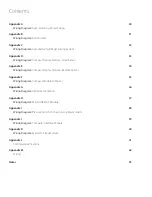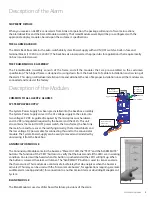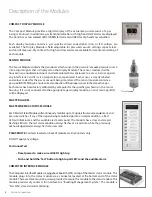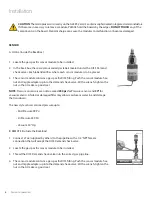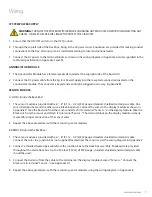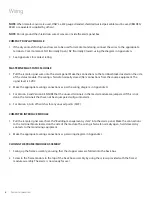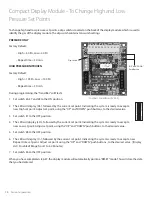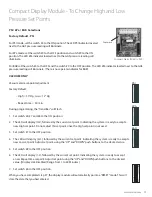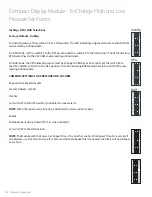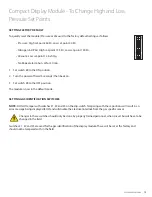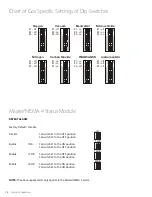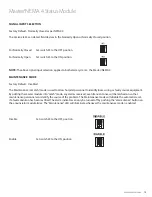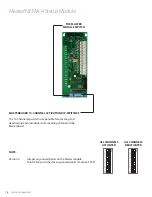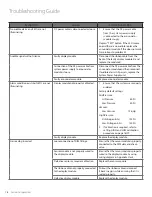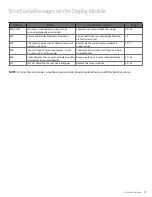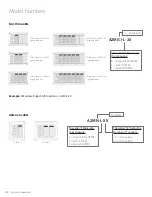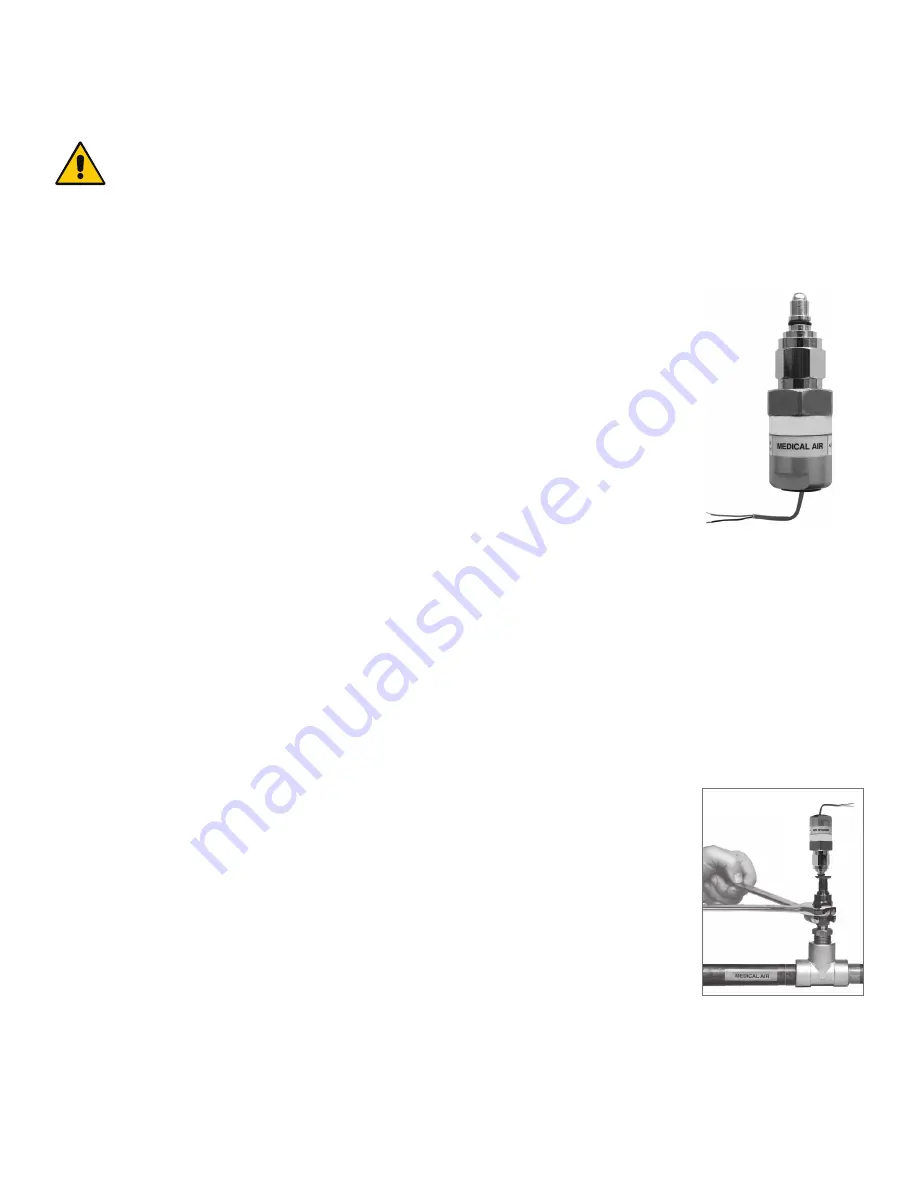
6
Amico Corporation
CAUTION
: The microprocessor circuitry on the ALERT-2 alarm contains sophisticated integrated semiconductors.
If it becomes necessary to remove a module, PLEASE hold the boards by the edges.
DO NOT TOUCH
any of the
components on the board. Static discharge can cause the modules to malfunction, or become damaged.
SENSOR
A. LOCAL (Inside the Back Box)
1. Locate the gas specific sensor module to be installed.
2. In the back box, there are colour coded gas labels located under the DISS Demand
check valves. Each label identifies where each sensor module is to be placed.
3. The sensor module contains a gas specific DISS fitting. Push the sensor module hex-
nut and nipple adapter up into the demand check-valve. With a wrench, tighten the
nut so that it makes a good seal.
NOTE
: Pressure on sensors are not to exceed
250 psi
for Pressure sensors and
30"
for
vacuum sensors. A failed or damaged filter may allow moisture or water in and damage
the transducers.
The new style sensors can read pressure up to:
• Mid Pressure 99 Psi
• Hi Pressure 249 Psi
• Vacuum 30" Hg
B. REMOTE (Outside the Back Box)
1. Connect a Tee (supplied by others) to the pipeline with a 1/4" NPT female
connection that will accept the DISS Demand check-valve.
2. Locate the gas specific sensor module to be installed.
3. Thread the DISS Demand check-valve into the correct gas pipe line.
4. The sensor module contains a gas specific DISS fitting. Push the sensor module hex-
nut and nipple adapter up into the demand check-valve. With a wrench, tighten the
nut so that it makes a good seal.
Installation
A m i c o M i c r o p r o c e s s o r B a s e d A l a r m
P a g e : 1 2
CAUTION:
The microprocessor circuitry on the ALERT-2 alarm con-
tains sophisticated integrated semiconductors. If it becomes necessary
to remove a module, PLEASE hold the boards by the edges.
DO NOT
TOUCH
any of the components on the board. Static discharge can
cause the modules to malfunction, or become damaged.
SENSOR
LOCAL (In the Back Box)
1.
Locate the gas specific
sensor module to be in-
stalled.
2.
In the back box, there are
colour coded gas labels
located under the DISS
Demand check valves. Each
label identifies where each
sensor module is to be
placed.
3.
The sensor module contains
a gas specific DISS fitting.
Push the sensor module
hex-nut and nipple adapter
up into the demand check-
valve. With a wrench, tighten the nut so that it makes a good seal.
NOTE: Pressure on sensors are not to exceed
250psi
for Pressure sensors and
30”
for Vacuum sensors
REMOTE (Outside the Back Box)
1.
Connect a Tee (supplied
by others) to the pipeline
with a 1/4" NPT female
connection that will accept
the DISS Demand check-
valve.
2.
Locate the gas specific
sensor module to be
installed.
3.
Thread the DISS Demand
check-valve into the
correct gas pipe line.
4.
The sensor module contains a gas specific DISS fitting. Push the
sensor module hex-nut and nipple adapter up into the demand
check-valve. With a wrench, tighten the nut so that it makes a
good seal.

